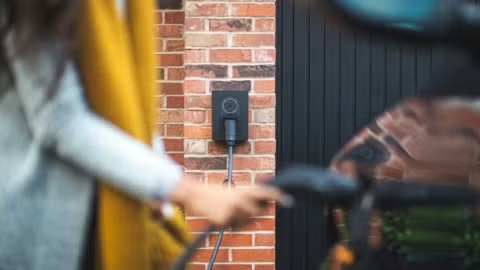Energy-Efficient Mortgages: It Pays to Go Green
The author of today’s post, Jeffery Greenblatt, Ph.D., is a scientist at Environmental Defense specializing in low-carbon energy technologies.
Consumers and businesses alike complain that it takes years for savings on energy bills to repay the up-front costs of energy efficiency. No longer. As the Wall Street Journal recently reported, lenders have discovered what energy analysts have known for years: loans for energy efficiency improvements are low-risk, because borrowers can "finance" these loans through lower energy payments.
Energy-efficient mortgages have been available for some time, but lenders didn’t promote them, and customers resisted the extra inspections and paperwork. Now to get home buyers interested, banks are offering incentives of $500-$1000 off closing costs. Everybody wins: consumers save money, lenders make a profit, and the atmosphere enjoys lower carbon emissions.
It works like this. Potential borrowers schedule an energy audit by an approved third-party company. The auditor identifies improvements that will lower energy costs, and calculates how much will be saved. Say a set of home improvements will save $50 a month. For a 30-year mortgage, this adds about $10,000 of qualifying income, depending on the interest rate. If the mortgage is approved, the lender puts the money for the improvements into an escrow account. The borrower makes the improvements after the home is purchased, and pays the costs over the life of the mortgage.
Energy-efficient mortgages are available for newly constructed homes as well, and offer an incentive for builders to add in efficiencies that they might not otherwise. Home builders have been reluctant to make energy-efficiency a priority for fear buyers would find the homes too expensive. Energy-efficiency loans largely eliminate this problem. Homes that are already energy efficient can be audited, and the projected energy savings counted as extra income for the borrower.
It’s not just mortgage lenders who are getting into the act. Some states – for example, Pennsylvania, Kansas, and New York – are subsidizing unsecured, low-interest loans for energy-efficient improvements.
These loans are a great idea, and I hope they become a routine part of buying a home. A U.S. Department of Energy study estimates that efficiency improvements in U.S. homes could lower energy usage 20 percent by 2020. A U.N. Foundation study [PDF] arrived at a similar conclusion – efficiency improvements could lower energy usage 30 percent or more by 2030. That’s nearly 500 million metric tons of CO2. When one considers that 20 percent of U.S. carbon dioxide emissions are attributable to home heating and electricity use, it’s clear that the potential savings are enormous.












